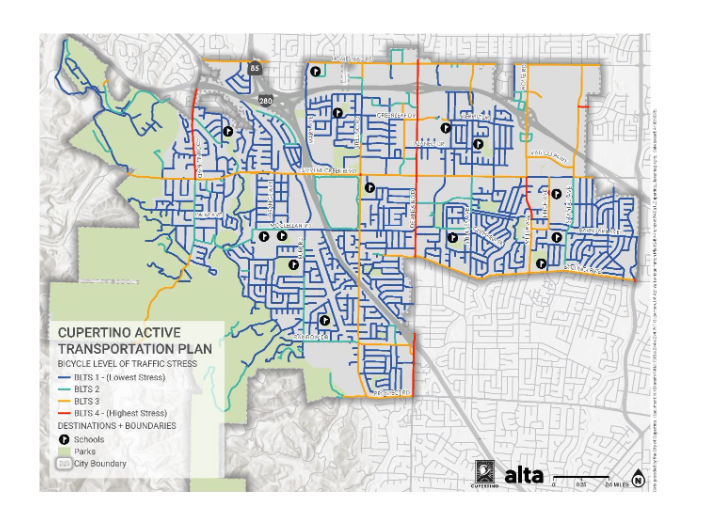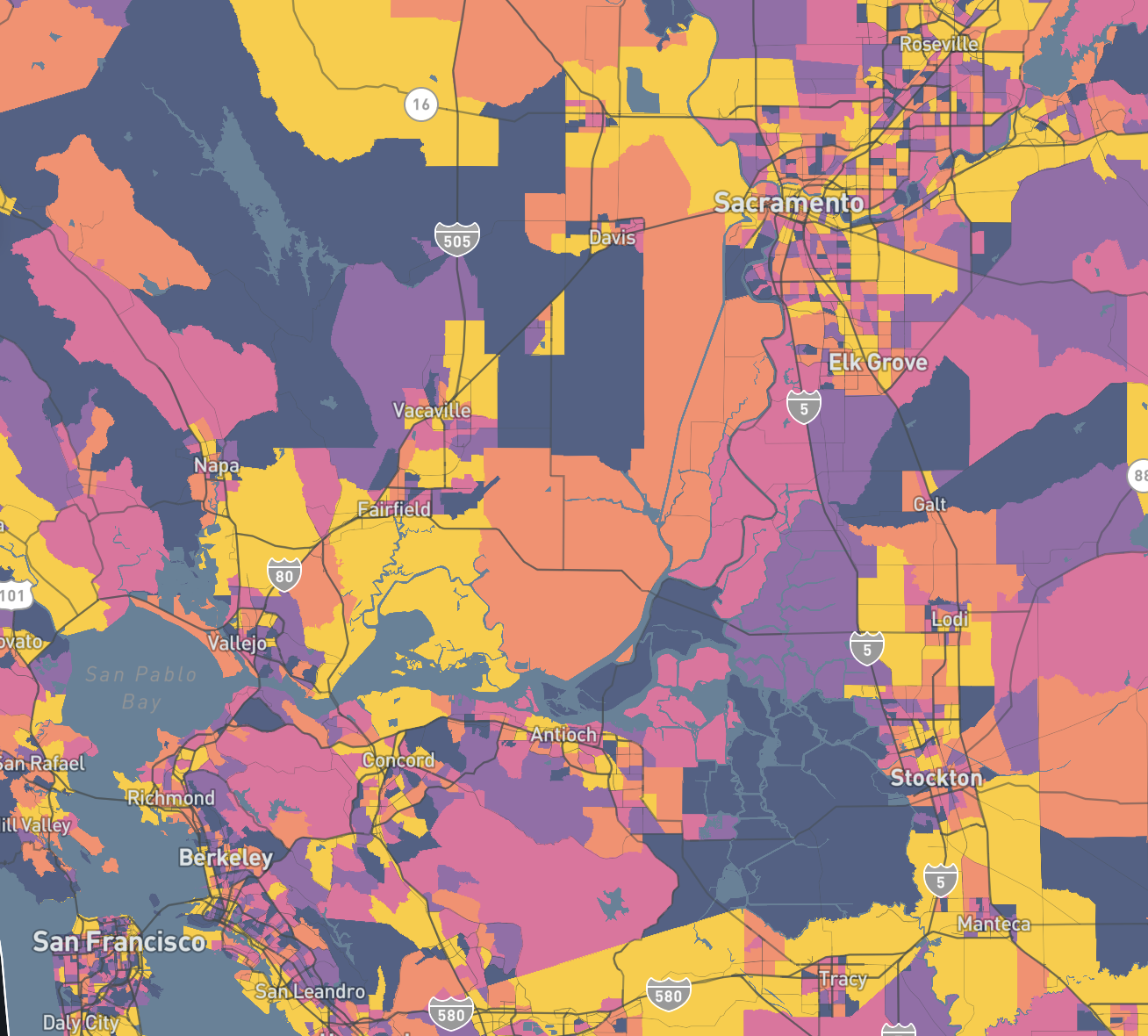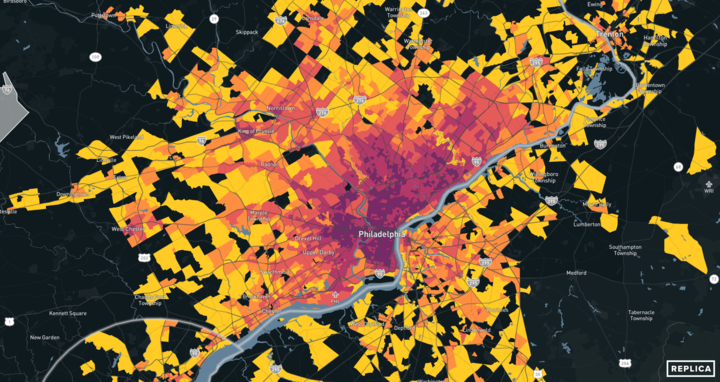Background
As the public transit agency for Nashville – Davidson County and the regional service provider for the surrounding counties, WeGo Public Transit recently gained access to Replica data through the Greater Nashville Regional Council (GNRC). As Nashville undergoes a period of rapid growth, and WeGo – along with transit agencies nationwide – navigates a changed and changing landscape in the post-pandemic environment, up to date information about mobility in the region is more relevant than ever before. This blog post is co-authored by WeGo’s Scheduling & Service Planning Manager and Director of Planning and Grants, and reflects upon the past, present, and future of transit service in the Nashville region.

Overview of WeGo Public Transit
WeGo Public Transit, comprised of the Nashville Metropolitan Transit Authority and the Middle Tennessee Regional Transportation Authority, is the operator of public transit in Nashville – Davidson County and the surrounding region. WeGo operates 26 local routes and paratransit service in Davidson County, nine regional routes connecting surrounding counties to Nashville, and one commuter rail line. Local services primarily operate in a hub and spoke configuration, with most routes terminating at the Elizabeth Duff Transit Center at WeGo Central, and regional services connect surrounding counties to downtown Nashville.

Transit in Nashville at the Onset of the Covid-19 Pandemic
In 2019, WeGo’s state funding suffered a major cut, and as a result, in October 2019 we were forced to implement service changes reflecting a 12% reduction in service hours. In the months preceding this service change, we carefully analyzed our network to find any opportunities to eliminate or reduce inefficiencies.
As Steve Bland, WeGo’s CEO described it, we made these service cuts “with a scalpel, not a knife,” in order to minimize customer impact as much as possible. We took the opportunity to combine overlaid local and skip-stop services, resulting in more frequent and consistent service on some of our busiest corridors. We also combined routes that ran parallel to each other in close proximity and eliminated some routes and portions of routes with very low productivity, realigning other routes to absorb the most productive parts, as well as parts serving vulnerable populations. While a service reduction of this magnitude necessarily has negative impacts to customers, we tried to minimize these effects, and ridership after implementation reflected this – the 12% reduction in service hours resulted in only a 6.5% loss of ridership in the first quarter it was in operation.
By March of 2020, Middle Tennessee was starting to see the impacts on the Covid-19 pandemic. Within the next few months, ridership dropped to 42% of pre-Covid levels on local services and just 8% of pre-Covid levels on regional services. Our response to the pandemic primarily focused on the safety of our staff and customers. We cut service hours to 70% of pre-Covid levels in order to reduce exposure for our operators and better align service with ridership while promoting social distancing. As it turned out, the strategic service changes in October 2019 situated us well for this – with a leaner service model, we were able to focus resources on our busiest services.

Bouncing Back from the Pandemic: Restoring Service and Ridership
While we had traditionally implemented service changes every six months, we started taking a nimbler approach as we restored service, monitoring ridership daily and inserting additional buses as soon as we saw overcrowding (by new social distancing standards) start to emerge. Over the next few months, we deployed more buses on key corridors where essential workers were riding the most, aligning with the principles of Better Bus, our 5-year strategic plan for service improvement. This soon resulted in frequency on some of our busiest corridors that was actually better than we had before the pandemic, with our busiest routes now operating every 10-12 minutes. As stay at home orders were phased out, ridership responded to these frequency improvements, and combined with shifting demographics and rider profiles, major shifts in our ridership began to emerge.
In subsequent years, additional funding became available, and in Spring 2022, we were operating more service hours than we had before the pandemic, though we still have not reached the level of service we operated before the 2019 funding cut. In the most recent quarter ending in September 2023, our local service ridership had returned to 97% of pre-pandemic levels. However, that ridership looks a lot different than it did before the pandemic (e.g., some routes have recovered more quickly than others; Saturday, Sunday, and evening ridership are now all more than 20% higher than pre-Covid, and our distribution of service hours reflects these changes). While our local network has largely rebounded from the impacts of the Covid-19 pandemic, our regional express and commuter services have not. Regional bus and rail ridership are currently around 40% and 35% of pre-Covid ridership, respectively.

Leveraging Replica Data in Planning for the Future
As we plan for service improvements for the next few years, areas of focus include shifting away from a hub and spoke model to a network where passengers do not have to travel downtown to transfer. While riders and prospective riders alike frequently request additional connections outside of downtown, our “crosstown” routes that we operate currently have the lowest productivity in our network. In addition to analyzing current ridership patterns, we are starting to use Replica data to identify the areas where crosstown routes will align with existing travel patterns so that we can strategically implement crosstown services that will reduce travel times for current passengers and create more competitive trip times to attract new riders. This will also allow us to align capital improvements to facilitate safe transfers outside of downtown.

Although we have not made any major changes to our regional express or commuter services since the start of the pandemic, we have taken a deeper look through a future strategy study for our WeGo Star commuter rail service, which is being informed in part by Replica data. The purpose of the WeGo Star study is to evaluate the most effective use of the line to meet current needs while identifying how to best position the Star to offer future enhanced service. As part of the study’s market assessment, we used Replica Places data to analyze changes in daily trip distribution comparing pre- and post-Covid-19 patterns along the corridor. The data provided insights into changes in travel distribution and peak time shifts and gave an understanding about where people are going beyond the stations. This will help us to estimate potential passenger trip demand including identifying network integration gaps and opportunities for microtransit service areas. The information will be valuable as we build a “business case approach” that considers regional demand, and we anticipate that the final recommendations will be flexible to also be applied to regional bus service.


Looking Ahead
While we continue to use traditional data sources such as ridership and census data, we hope that by adding Replica to our toolbox, we are able to be even more responsive to mobility needs in Nashville and the surrounding region. In this way, Replica data can effectively supplement and augment other data sources, thereby enhancing our ability to comprehensively plan for the evolving landscape of public transit in the Nashville area.
This blog was co-authored by Katie Freudberg, Scheduling & Service Planning Manager, and Félix G. Castrodad, Director of Planning and Grants at WeGo.
Do you want to learn how to view transit trip patterns in Replica Places so you can complete your own analyses? Visit this “How to” resource in the online Help Center (Note: You must be logged in to Replica to access this page).
Would you like to share a success story of integrating Replica data into one or more of your projects? Email support@replicahq.com to provide details.








